 |
 |
 |
| |
IMPLEMENTATION OF RAPID POINT-OF-CARE DIAGNOSTIC SYSTEMS TO SUPPORT HCV MICRO-ELIMINATION STRATEGIES
IN A TERTIARY HOSPITAL IN SPAIN
|
| |
| |

"The gap time between the sample reception and the result communication to Hepatology Unit using the point-of-care strategy was in all cases less than 5 hours, allowing the results report in the same day."
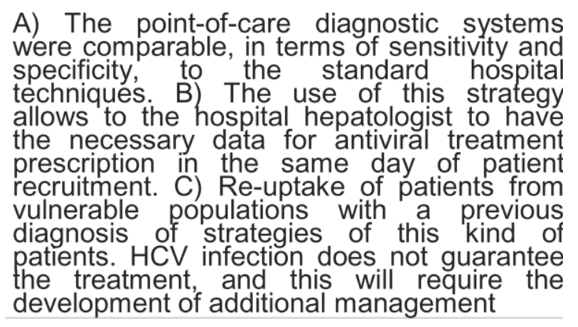
AASLD 2021 Nov 12-15
Antonio Madejon1,2, Armando Alfredo Varela3, María José Hernández-Nieves3, Miriam Romero1,2, Araceli Garcia Sanchez2, Antonio Olveira2, Pilar Castillo Grau2, Jose Carlos Erdozain2 and Javier Garcia-Samaniego1,2, (1)Centro De Investigación Biomédica En Red (CIBER), (2)Hospital Universitario La Paz, Hepatology Unit, (3)Colmenar Viejo Norte Health Center
Background: The implementation of rapid analysis techniques at point-of-care or hospital facilities allows the optimization of the HCV cascade of care. The aim of this work was to develop an integrated rapid diagnosis strategy that includes the identification of patients, samples testing, clinical diagnosis and communication to the Hepatology Unit for referral and treatment.
Methods: We recruited patients from Comprehensive Care Centers for Drug Addicts (CAID) and Primary Care Centers (CAP) who met the inclusion criteria: A) risk populations without previous diagnosis of HCV infection, and B) untreated HCV positive patients. The diagnostic cascade consisted of: A) patient recruitment; B) taking samples in the CAID/CAP facilities; C) sample analysis; and D) communication of results to the hospital hepatologists. The HCV-RNA and genotype were analyzed with a rapid kit (HCV-kit, Epistem) and confirmed with the standard diagnostic techniques at the Hospital facilities.
Results: All patients referred to the hospital for HCV screening between 01/01/2019 and 03/10/2020 (moment at which the study was discontinued due to Covid-19 pandemics) were included. Sixty patients had a history of parenteral drug addiction. We identified 51 patients with detectable HCV-RNA [3 (6%) from CAIDs]. Five (4%), including 3 patients with active addiction practices, were aware of the HCV infection but they have not been previously treated. All HCV-RNA positive patients were infected with genotype 1. An exact correlation was confirmed between the results obtained with the point-of-care and hospital standard diagnostic systems. The gap time between the sample reception and the result communication to Hepatology Unit using the point-of-care strategy was in all cases less than 5 hours, allowing the results report in the same day. Antiviral therapy with DAAs was proposed to all patients and all except the 3 from the CAIDs agreed to be treated.
Conclusion: A) The point-of-care diagnostic systems were comparable, in terms of sensitivity and specificity, to the standard hospital techniques. B) The use of this strategy allows to the hospital hepatologist to have the necessary data for antiviral treatment prescription in the same day of patient recruitment. C) Re-uptake of patients from vulnerable populations with a previous diagnosis of HCV infection does not guarantee the treatment and this will require the development of additional management strategies of this kind of patients.
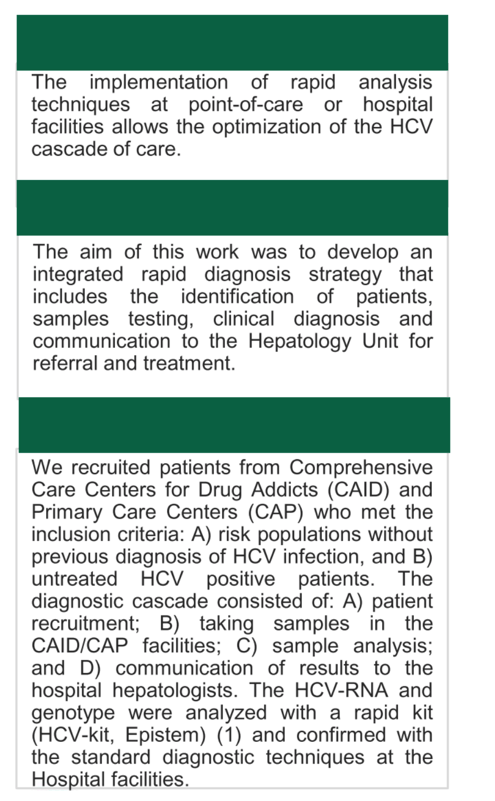
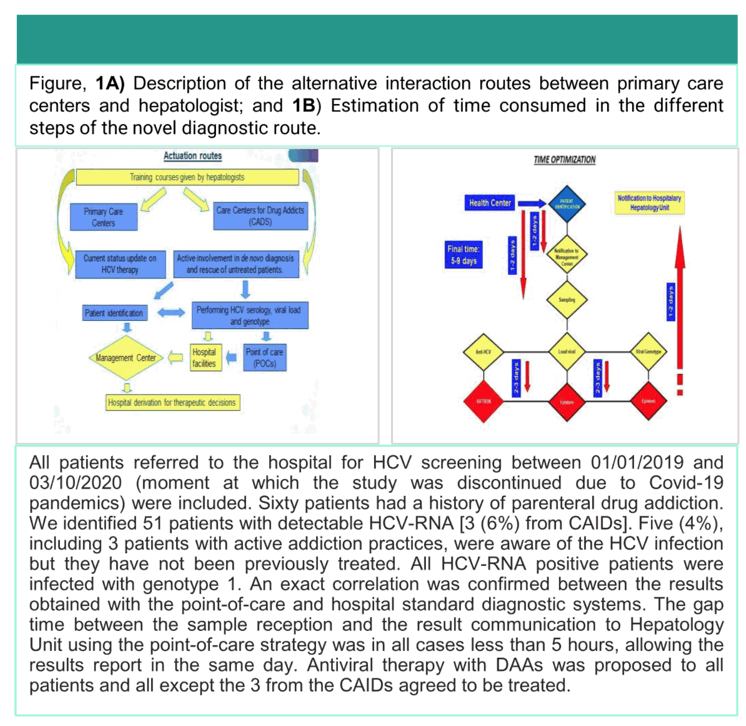
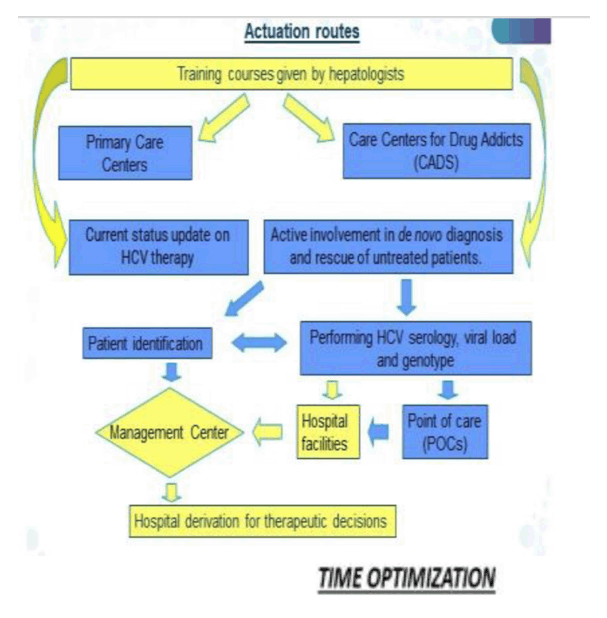
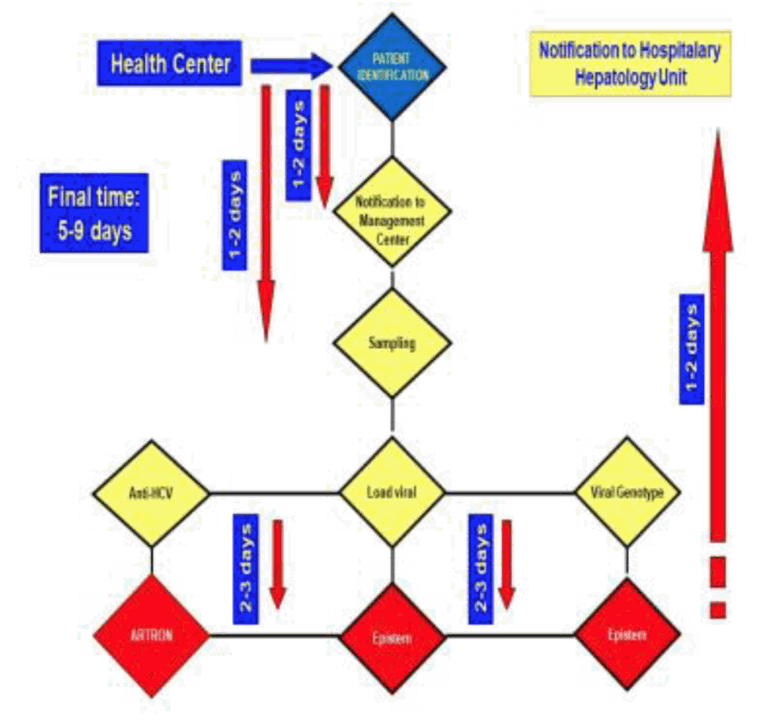
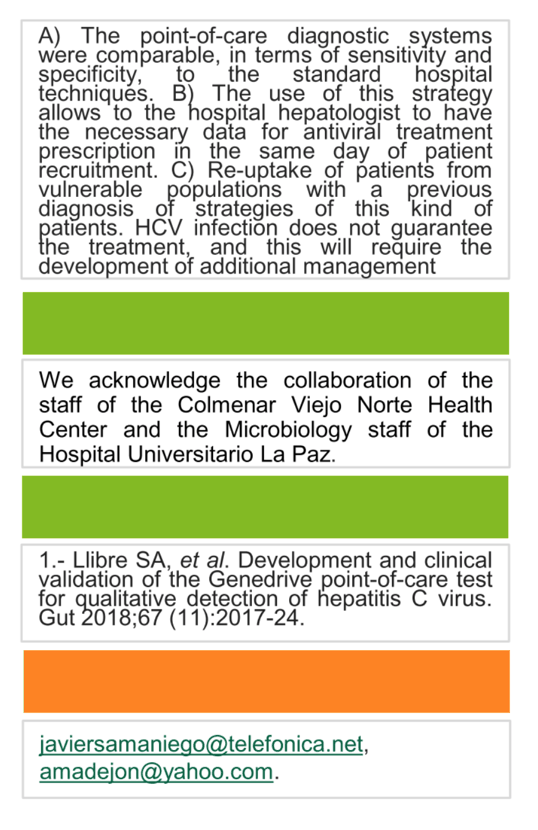
|
| |
|
 |
 |
|
|